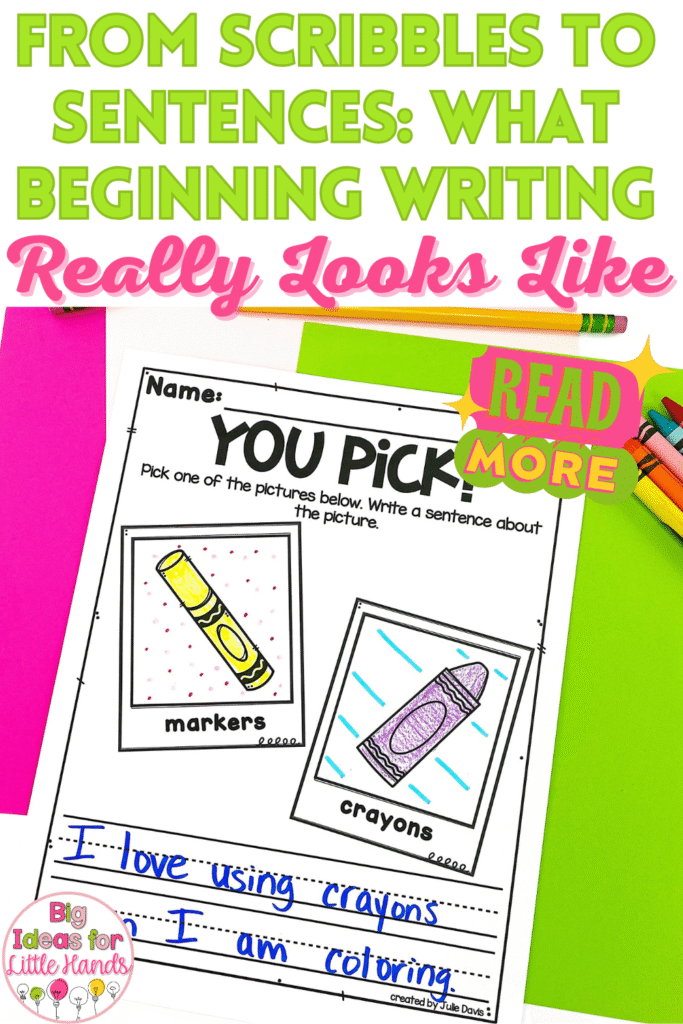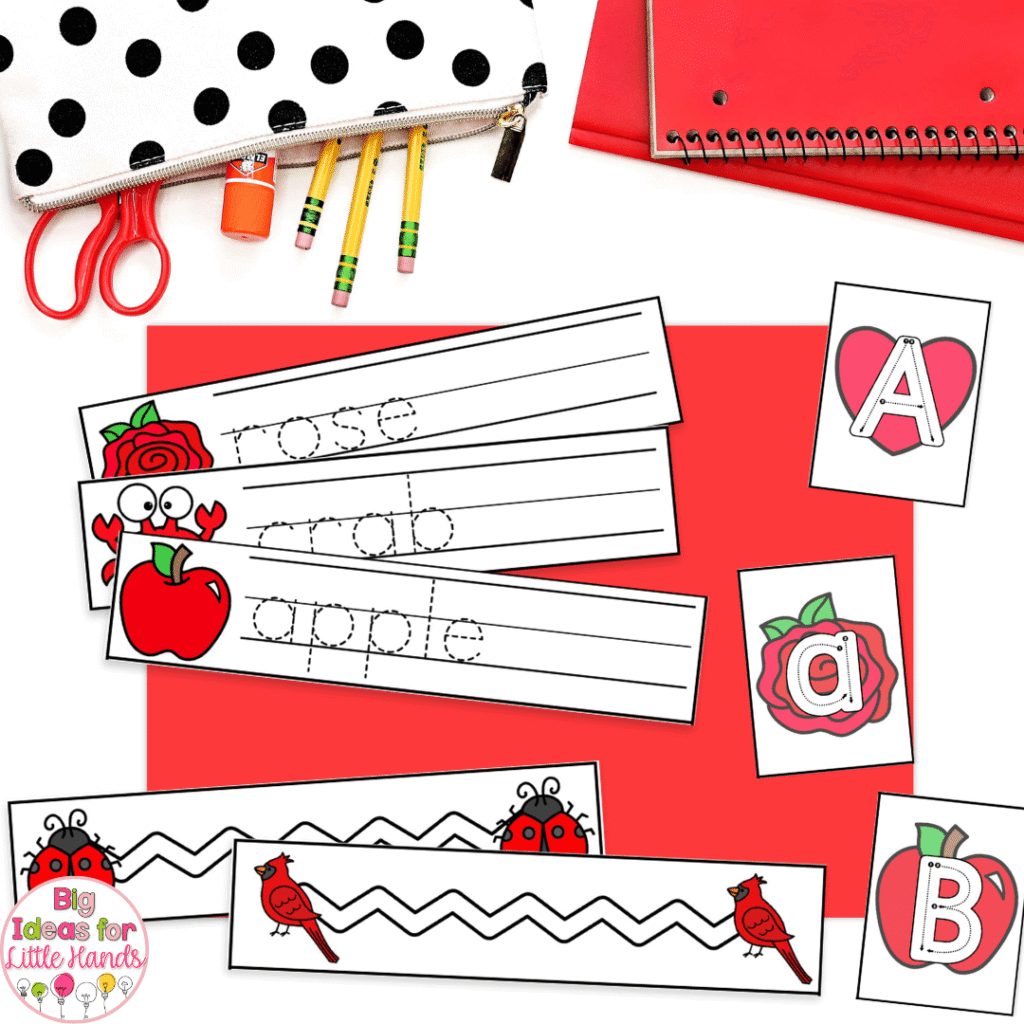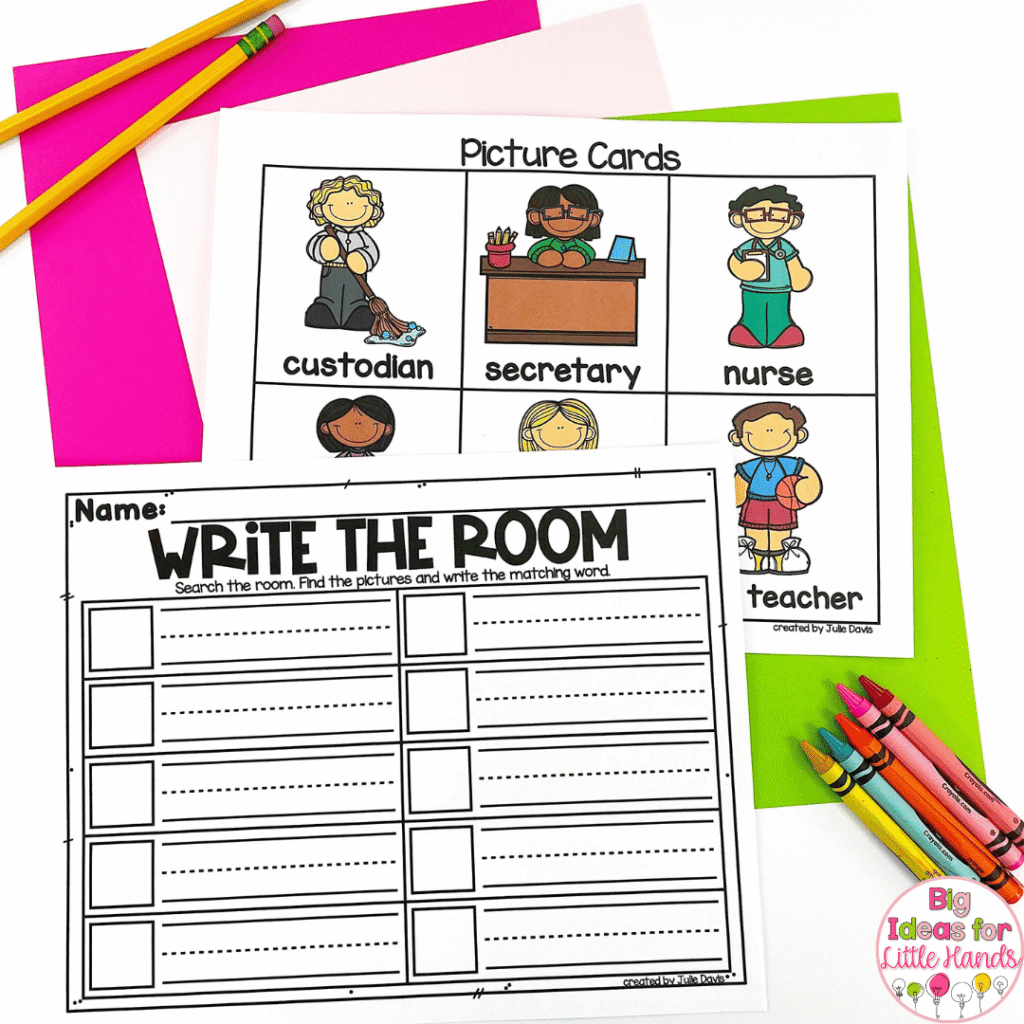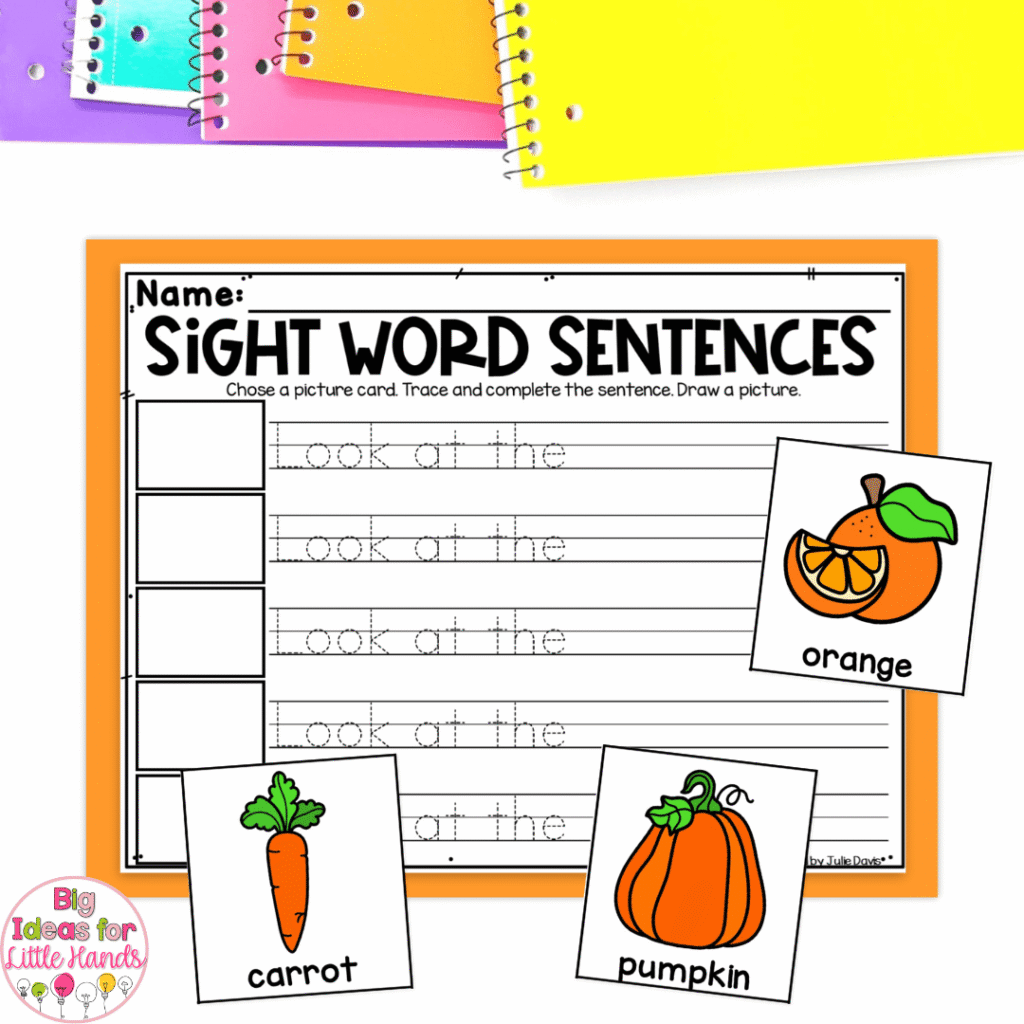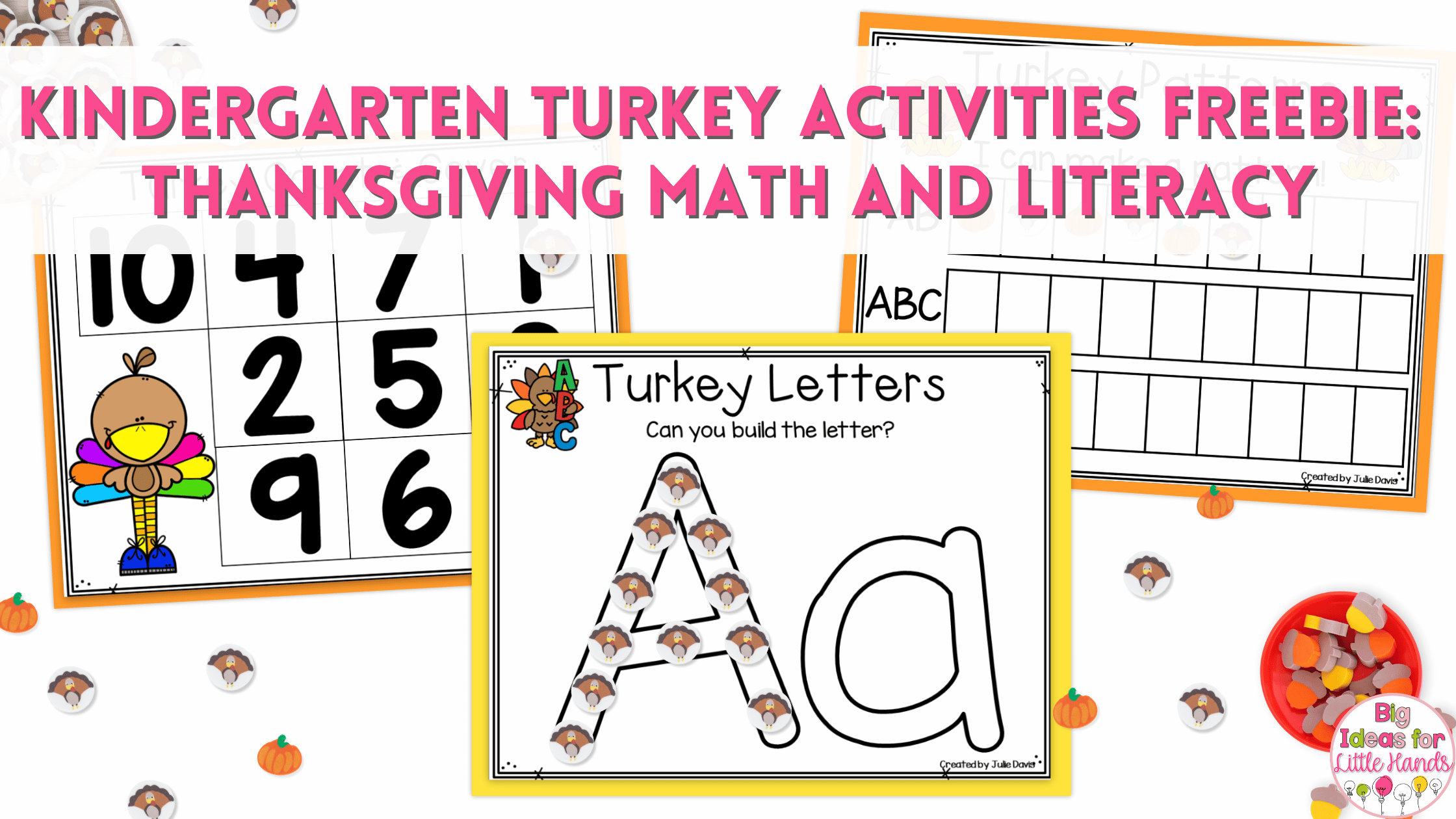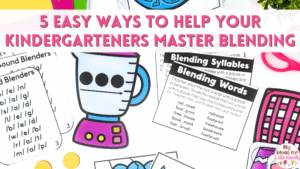If you’ve ever watched a kindergartener beam with pride as they show you a page full of squiggly lines and tell you it says “I love my dog”, you know beginning writing is about so much more than just forming letters. It’s a fascinating and fun journey from scribbles to sentences. As teachers, it’s important to recognize where each student is on their writing path so we can give them the right prompts, tools, and encouragement to keep growing. Let’s walk through the stages of beginning writing with activity ideas you can use in your classroom, and see how the right resources can make a big difference.
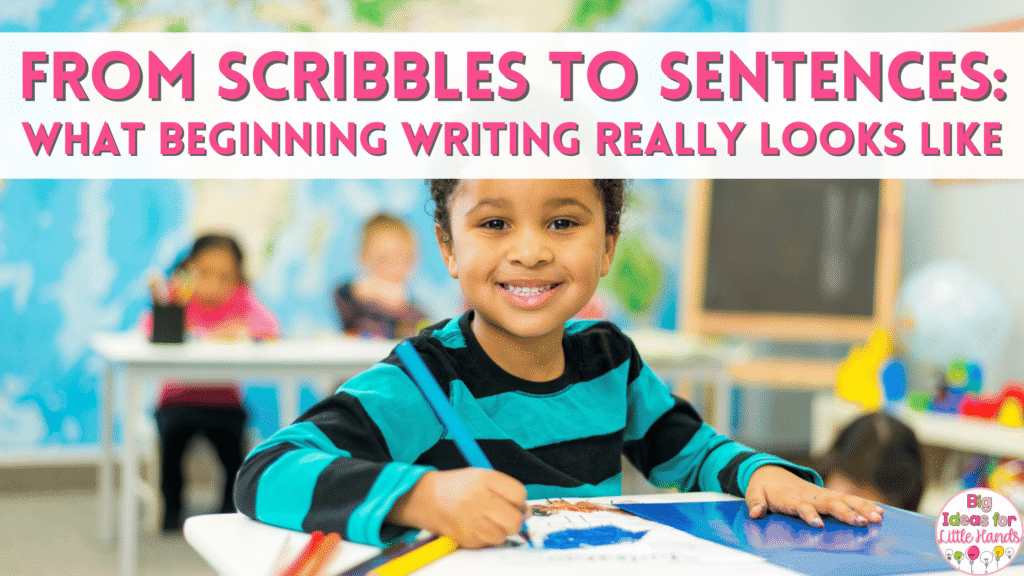
Supporting Beginning Writing Skills at Every Stage
Supporting beginning writing skills is about so much more than getting students to form perfect letters or write full sentences. In the early years, writing is a developmental process that builds on itself. Each stage, from scribbles to letter-like shapes to simple words, is an important step toward becoming a confident, capable writer.

When we honor where students are and give them the right mix of modeling, practice, and encouragement, we help them strengthen both the physical skills (like hand strength and pencil grip) and the cognitive skills (like organizing ideas and connecting sounds to letters) that writing demands. The goal is to create a foundation where every child feels successful, engaged, and ready to grow, no matter where they start!
Ready to see what beginning writing looks like at every stage and how to support it in your classroom? Come along for a closer look!
Stage 1: Scribbling and Drawing
In the earliest stage of beginning writing, students may fill a page with loops, swirls, and lines that don’t resemble letters at all. This “writing” is a powerful first step, though! It shows they understand that marks on a page can represent ideas as well as an interest in trying it on their own. Use strategic fine motor activities at this stage to encourage growth, grow hand strength, and prepare to expand on those beginning writing skills. Here are a few of my favorite fine motor activities:
- Playdough Letter Formation: Roll, pinch, and flatten dough to form letters or numbers to strengthen finger muscles.
- Clothespin Clip Activities: Clip clothespins onto cards or a line to build hand strength.
- Tweezers & Tongs Games: Pick up pom-poms, beads, or buttons for a fun pre-writing warm-up.
- Lacing Cards & Beads: Develops bilateral coordination and pincer grasp.
- Scissor Skills Practice: Cutting along straight, curved, and zigzag lines is a fun fine motor activity!
All of these fine motor activities will help build hand strength in your students. This will be essential for success in future writing, so be sure to sprinkle in plenty of these types of activities!
Stage 2: Letter-Like Forms and Random Letters
Here, students begin to mix in shapes that look like letters or even use real letters, often from their own name. They may not match sounds to letters yet, but they’re experimenting with how writing “should” look. Once your kiddos hit this stage, provide proper scaffolding to help encourage letter formation, proper pencil grip, and continued growth with beginning writing skills. Here are some things to consider:
- Provide alphabet charts for reference.
- Invite students to “read” their writing aloud to a partner.
- Provide crayons, markers, and chunky pencils for easy grip.
- Use dry-erase name cards to help them practice familiar letters.
- Encourage tracing activities that develop muscle memory for letter formation.
Inside my All About Colors Writing Bundle, you will find tons of great resources to support these activities. Some of the ones that work best for this stage include the letter formation cards, vocabulary tracing, and the included color word anchor charts. These resources will offer just the right amount of support to help students grow, without being frustrating.
Try Vertical Writing
If you’re looking for one more strategy to try at this stage, give vertical writing a try! This is often overlooked for early writing growth, but produces great results!
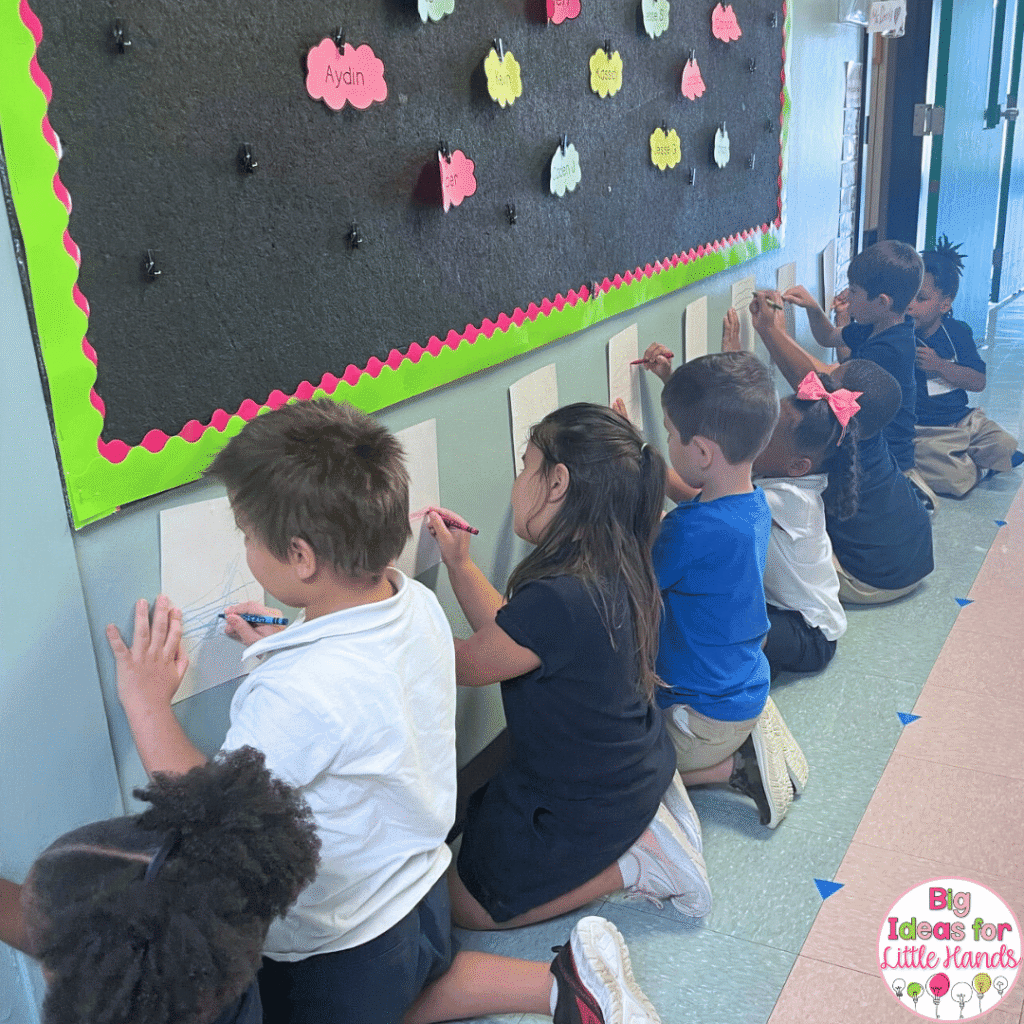
Give students opportunities to write on vertical surfaces such as easels, chart paper, whiteboards, or even taped-up butcher paper on the wall. Here’s why it works:
- Encourages correct wrist position.
- Makes writing feel bigger, more engaging, and less intimidating.
- Strengthens shoulder, arm, and hand muscles for better fine motor control.
You can use vertical spaces for everything from tracing letters to brainstorming words as a group. It’s a small shift that can make a big difference in handwriting stamina and confidence.
Stage 3: Labeling and Beginning Sounds
As students connect letters with sounds, they often start labeling their drawings, writing “dg” under a dog or “hs” under a house. This is an exciting leap toward conventional writing! At this point, I like to add some additional support to our classroom to help encourage children to expand on these skills. Give these a try in your room:
- Picture labeling games.
- Sound sorting activities.
- Anchor charts with common words for quick reference.
- Use open-ended prompts like “Draw and write about your favorite game.”
Set Up a Writing Center
While you can certainly set up a writing center before this point (and I definitely do!), now is a great time to do so if you don’t already have one. In my room, we rotate these materials each month so that the writing center feels fresh and new, but we’re working on a lot of the same important concepts month after month.
The writing center resources that I use were designed with beginning writing in mind, so they’re perfect for growth in these early stages!
For example, inside the Back-to-School Writing Station, you’ll find a variety of resources to target skills such as letter formation, fine motor skills, vocabulary words, and writing words and sentences. You can pick and choose the activities that best connect to your students’ current level. Some of these activities are perfect for beginning of the year kindergarten, while others might be better suited for beginning of the year first grade.
Inside, you get 14 different activities, including:
- vocabulary cards
- letter formation cards
- picture prompts
- story prompts
- sight word sentences and so much more!
With over 100 pages in this unit, you’ll have plenty of options to choose from, no matter what level your students are currently working at with their beginning writing skills! Not to mention, the clear visuals and themed prompts encourage students to write words they’re interested in, reinforcing beginning sound connections. For more information, make sure to read Setting Up a Back to School Writing Center next!
Stage 4: Short Phrases and Sentences
At this stage, students combine words into simple phrases or sentences. Spelling may be inventive, but they’re now clearly communicating ideas in writing. This is when it gets REALLY exciting for both the students and you! I love when students run up to me with their writing page, proudly ready for me to decode the sentence.
Once your kids reach this stage in their beginning writing skills, make sure to expand your classroom activities to encourage growth. Here are some ideas:
- Provide sentence starters such as “I like…” or “My favorite…”.
- Encourage peer sharing and publishing work on a class display.
- Offer checklists for capitalization, spacing, and punctuation.
Both the Colors Writing Bundle and the Back to School Writing Center I mentioned above are jam-packed with activities that blend beautifully for this stage! With fun prompts like “You Pick” and “Spin a Silly Story”, students can respond in full sentences to the same prompts they used earlier, showing just how far they’ve come with their beginning writing skills!
Support Beginning Writing Through Every Stage
Both the Back-to-School Writing Station and the All About Colors Writing Centers Bundle are designed to meet students exactly where they are in their writing journey.
For your emerging writers who are still exploring lines and shapes, the colorful picture charts and letter formation cards offer just the right level of difficulty.
As students move into labeling and writing simple words, the lists, labeling pages, and tracing pages guide them in connecting sounds to letters while still encouraging creativity. And for those ready to write short phrases or sentences, the open-ended questions and sentence starters provide space for expanding ideas. These resources make it easy to differentiate, giving every student meaningful, confidence-boosting practice that matches their current stage while nudging them toward the next!
Pull it All Together for Beginning Writing Growth
I hope this post has encouraged you to design your own plan to support beginning writing skills in your classroom. From the first proud scribbles to carefully crafted sentences, every stage of early writing is worth celebrating! If you’re looking for a no-brainer way to support beginning writing through every stage, these resources will make it simple and easy!
Don’t forget, by understanding where your students are and offering the right activities, prompts, and tools, you can meet them right where they are and guide them forward with confidence. And as always, you can find many more writing resources in my TPT Shop! Have fun supporting writing skills in your classroom, friend!
Save This Post
Make sure to pin this post on Pinterest so that you can keep track of these ideas to support beginning writing skills!
